BHE06 Wooden Homecare Bed for Elder
A homecare bed is an indispensable medical device for patients requiring ongoing care within the comfort. These beds are engineered to provide superior comfort, enhanced safety, and greater convenience for both the patient and the caregiver. They are highly adjustable, with features that allow the head, feet, and overall height of the bed to be finely tuned to the patient’s needs. Side rails offer added safety, preventing falls and aiding in patient movement, while specialized mattresses help prevent pressure ulcers and maximize comfort. The inclusion of a remote control allows for easy adjustments to the bed’s positioning, which is especially beneficial for patients with limited mobility. En outre, homecare beds often come equipped with wheels for effortless mobility, enabling quick repositioning and simplified room cleaning. Additional provisions for medical equipment, such as IV poles and monkey poles, ensure that patients have access to all necessary treatments without compromising their comfort.
Paramètre technique:
| Longueur externe | 2160mm |
| Largeur externe | 960mm |
| Plateforme de matelas | 1925*900mm |
| Charge de travail sûre | 250kg |
| Dossier | 75°±10° |
| Repose-genoux | 35°±10° |
Configuration technique:
| Moteur linéaire | 3pièces |
| Wood Bed End with Safe Lock | 1ensemble |
| Poteau de singe | 1ordinateur |
| 5 Rail latéral pliable en métal à colonne | 1ensemble |
| IV pole | 1ensemble |
| IV pole prevision | 4pièces |
| Télécommande | 1ordinateur |
| 5" Roulette double face | 4pièces |
| Matelas | 1ordinateur |
Produit Introduction:
Contrôle de qualité:
- Conception: The design of the homecare bed tailored for patients is a testament to thoughtful innovation in medical equipment, offering a harmonious blend of comfort, Fonctionnalité, et la sécurité. Recognizing the challenges that getting up and out of bed can pose for this demographic, the bed is engineered to seamlessly integrate a variety of features that cater to the patients’ daily needs. It typically includes adjustable height settings, allowing caregivers to raise or lower the bed for optimal patient transfer with minimal strain. The bed may also be equipped with a motorized positioning system that can tilt and bend at multiple points, providing support for sitting up, leg elevation, or changing lying positions, thus reducing the necessity for patients to move excessively. Side rails ensure safety and can often be retracted or lowered as needed. Convenience is further enhanced with user-friendly controls that allow patients to adjust settings autonomously, promoting a sense of independence.
- Technologie: The technology incorporated into the homecare bed represents a fusion of advanced manufacturing techniques and patient safety considerations. Utilizing Robot 360° no dead-angle welding technology, the bed’s construction boasts seamless joins and superior structural integrity, ensuring a sturdy and durable frame. This precision welding technique eliminates sharp edges and provides a uniformly smooth finish, améliorer la sécurité des patients. Complementing this is the precision cutting technology, which ensures that each component of the bed fits together flawlessly, contributing to both the aesthetic and the overall stability of the bed. The use of cold-rolled steel plate technology in the bed’s construction not only adds to the bed’s durability but also ensures that the bed body is free from any protrusions or sharp parts that could potentially harm the patient. This attention to detail in the manufacturing process results in a bed that is not only safe and comfortable for the patients but also easy for caregivers to maintain and operate.
- Norme de sécurité: The homecare bed is engineered to meet the stringent safety standards as laid out by ISO 13485:2016 et ISO 9001:2015, ensuring it adheres to the highest international requirements for medical device quality management. OIN 13485:2016 specifies requirements for a comprehensive quality management system for the design and manufacture of medical devices, placing a significant emphasis on risk management and consistent design validation. En plus, the bed complies with ISO 9001:2015, which focuses on quality management systems and performance, further demonstrating the manufacturer’s commitment to excellence. The bed also meets the essential health and safety requirements outlined in the CE (Conformité Européenne) marking, signifying that it complies with EU legislation and can be traded within the European market. These certifications establish the homecare bed as a reliable and safe choice for patients, ensuring that from material selection to final production, every process is scrutinized to protect and enhance patient well-being.
Cadres:
- Plate-forme: The platform of the homecare bed showcases thoughtful design elements tailored for patient comfort and durability. Crafted from cold-rolled steel sheet, the bed platform is segmented into four distinct parts, each serving a specific functional purpose. The inclusion of air holes across the platform promotes ventilation, helping to regulate temperature and reduce the risk of moisture build-up, which is particularly beneficial for patients who spend extended periods in bed. The independent lowering of the leg plate allows for customized positioning to enhance blood circulation and reduce swelling, providing targeted relief and comfort. The surface of the platform is treated to achieve a smooth finish, minimizing the risk of abrasion or skin irritation for the patient. In addition to comfort features, the bed’s material is chosen for its resilience, boasting high-temperature resistance and corrosion resistance, ensuring that the platform remains hygienic and easy to clean over time. This combination of segmented design, confort du patient, and durable construction materials underscores the platform’s role in delivering a superior homecare bed solution.
- Wood Bed End: The bed end of the homecare bed is thoughtfully crafted from light brown wood, exuding a sense of warmth that contributes to creating a comfortable and homely environment for the patient. This choice of material not only adds an aesthetic appeal reminiscent of traditional furniture but also brings a touch of familiarity and serenity to the care setting, which can be psychologically beneficial for the patient. The wooden bed end is engineered for durability, ensuring that it can withstand the rigors of long-term use while maintaining its inviting appearance. Its robust construction supports the daily operational demands of homecare, from frequent adjustments to the accidental knocks and bumps that come with regular activity around the bed. The wood is likely treated to resist wear and tear, making it a practical choice for a healthcare environment where hygiene and maintenance are of paramount importance. Dans l'ensemble, the design of the bed end aligns with the dual objectives of long-term care beds: to provide a product that is both functionally robust and emotionally comforting for patients and their caregivers.
- Metal Side Rail: The side rail of the homecare bed is an embodiment of patient safety and convenience, constructed with a sturdy metal five-column design. It can be effortlessly raised or folded down with the simple press of a button, offering quick and easy adaptability to a range of care scenarios. This functionality is particularly crucial for facilitating safe patient transfers, nursing procedures, and aiding patients when getting out of bed, thereby reducing the risk of falls and injuries. The side rail’s design incorporates an anti-pinch feature to protect the patient’s hands, ensuring that fingers or skin do not get caught as the rail is operated. This safety mechanism reflects the meticulous attention to detail in the bed’s design, which prioritizes the comfort and safety of the patient while also streamlining the work of caregivers. By combining robust construction with user-friendly controls and protective features, the side rail enhances the overall functionality of the homecare bed, providing peace of mind for both patients and healthcare providers.
Les fonctions:
- Ajustement de la section arrière: The back section of the homecare bed is engineered with precision to offer adjustable support for the patient, with a lifting angle of 75°±10°. This range of motion allows for ample flexibility to accommodate various activities such as eating, en lisant, ou engager une conversation, all of which can significantly enhance the patient’s quality of life. The adjustment is controlled by a user-friendly remote, which activates a smooth and quiet rise of the back section, ensuring the patient can reposition themselves with minimal effort and maximum comfort. The remote control’s intuitive design allows for easy operation, even for patients with limited dexterity or strength. This feature not only promotes autonomy for the patient but also assists caregivers in providing efficient care. The combination of a generous lift angle and the convenience of remote control underscores the homecare bed’s commitment to comfort, independence, and the dignity of those in need of long-term care.
- Ajustement de la section des jambes: The leg section adjustment on the homecare bed is another crucial feature that underscores the bed’s adaptability and patient-centric design. This function is controlled by a hand controller, which allows for precise manipulation of the leg section to an angle of 35°±10°. The controller enables a slow and smooth lifting movement, ensuring patient comfort and safety by minimizing the risk of sudden jerks or shifts that could cause discomfort or injury. This careful control is particularly beneficial for patients with circulatory concerns or those recovering from lower extremity procedures, as it allows for the elevation of the legs to reduce swelling and improve blood flow. In addition to the lifting capability, the leg section can also be lowered to create a seamless, chair-like position, which is ideal for patients when they wish to sit up for meals, social interaction, or while engaging in hobbies. This versatility not only contributes to the patient’s physical health by promoting circulation and relieving pressure but also supports psychological well-being by enabling greater engagement with their surroundings and daily activities. The hand controller’s user-friendly interface ensures that these adjustments can be made with ease by the patient or the caregiver, further enhancing the overall functionality of the homecare bed.
- Position du fauteuil cardiaque: The cardiac chair position function of the homecare bed is a therapeutic feature designed to assist patients with specific medical needs, such as those with cardiac, respiratory, or circulation issues. By lowering the leg section and raising the back section of the bed, the bed can mimic the posture of a cardiac chair, which is an upright seated position. This position is known to benefit patients by promoting better lung expansion, facilitant une respiration plus facile, and aiding in circulation, which is particularly advantageous for those recovering from cardiac events or surgery. The transition into this position is controlled by a hand controller, allowing for a smooth and gradual movement to ensure patient safety and comfort. This function not only provides medical benefits but also allows patients to engage in social activities and meal times in a more natural, seated position, contributing to an improved quality of life during their care period. The cardiac chair position underlines the multifunctional capability of the homecare bed, combining clinical benefits with patient comfort and autonomy.
Détails des accessoires:
- Moteur linéaire: The homecare bed is equipped with a sophisticated linear motor system, comprised of three individual motors, each meticulously designed to deliver the necessary power required for the bed’s multifunctional capabilities. These motors ensure that all adjustments—whether it’s the elevation of the back section, the lifting of the leg section, or the transition into the cardiac chair position—are executed with both strength and precision. The precision of these motors allows for smooth and controlled movements, enhancing the patient’s experience by minimizing any jarring or uncomfortable adjustments. A key feature of these linear motors is their low noise output. Despite their powerful performance, they operate quietly, preserving the tranquility of the indoor environment. This is a crucial consideration in a homecare setting, where maintaining a peaceful and restful atmosphere is vital for the well-being and recovery of the patient. The integration of these low-volume, high-performance motors into the homecare bed’s design demonstrates an advanced level of engineering, aimed at providing a harmonious balance between functional efficiency and patient comfort.
- Poteau IV&Prévisions du pôle IV: The homecare bed comes equipped with a thoughtfully designed IV pole prevision to cater to the varying medical needs of patients requiring intravenous therapies. The infusion rods are constructed from durable stainless steel, ensuring they are both sturdy and easy to clean, an essential consideration in a healthcare environment. Equipé de quatre crochets, the IV pole can accommodate multiple IV bags, allowing for simultaneous infusion of fluids, médicaments, or blood products as prescribed. The height of the IV pole is adjustable, providing flexibility to position the infusions at the optimal level for gravity-fed delivery and for the convenience of both patient and caregiver. With a total of four previsions situated at the four corners of the bed, these insertion points allow for the IV poles to be placed where most appropriate, depending on the patient’s position and specific treatment requirements. This versatility is key in a homecare setting, ensuring that the bed can be quickly and easily adapted to meet the changing needs of the patient, all while maintaining the comfort and functionality of their immediate care environment.
- Télécommande: The hand controller of the homecare bed is a pivotal tool that empowers patients with the autonomy to adjust their resting environment to their preference. This remote control device is intuitively designed, featuring user-friendly buttons that control various functions of the bed. With it, patients can independently adjust the angle and height of both the backplane and leg board, allowing them to find the most comfortable position for rest, sleep, or specific activities like reading or eating. The controller can also help in achieving the ideal position for therapeutic needs, such as the cardiac chair position, enhancing the patient’s recuperation environment. The ability to make these adjustments not only contributes to the patient’s physical comfort but also caters to their psychological well-being by providing a sense of control and dignity in their care process. The hand controller’s design typically emphasizes ease of use, with clear labels and often tactile buttons, making it accessible even for patients with limited dexterity or visual impairments. Through the hand controller, the homecare bed transforms into a dynamic tool for recovery, merging convenience, confort, and care into the patient’s hands.
- Matelas: The mattress of the homecare bed is a custom-designed element tailored to enhance the comfort and health of the patient. At its core, the mattress features a supportive sponge material, providing a balance of softness and firmness to alleviate pressure points and reduce the risk of bedsores. This is particularly important for patients who spend extended periods of time in bed. Encasing the sponge core is a waterproof yet breathable bed cover, a crucial feature that ensures the mattress remains hygienic and protected from spills or incontinence, while also allowing air to circulate to keep the skin cool and prevent moisture buildup. The design of the mattress takes into account the separate needs of the leg board area, with the mattress in this section being independent. This allows for targeted adjustments and elevations in the leg area without affecting the integrity or comfort of the rest of the mattress. Such a design facilitates specific therapeutic and comfort needs, such as elevation of the legs to reduce edema. Ensemble, these features of the mattress contribute to an optimal recuperative environment within the homecare setting, donner la priorité au confort du patient, santé, and ease of care.
- Roulette: The casters affixed to the homecare bed are engineered with meticulous attention to detail, ensuring smooth maneuverability and steadfast stability of the bed. These five-inch double-sided casters are crafted with an anti-winding design that prevents cords and other debris from becoming entangled in the wheels, which could otherwise impede movement or damage the caster mechanism. Made from materials that are resistant to slipping, corrosion, and heat, the casters are built to withstand the diverse conditions of a homecare environment while ensuring the bed can be easily and safely positioned as needed. En plus, the casters are equipped with a robust braking system that not only locks the bed firmly in place but is also designed to be wear-resistant, ensuring multiple uses do not compromise their effectiveness. The braking system can be activated without causing damage to the floors, making it safe to secure the bed even on various types of flooring. These features underscore the casters’ role in providing a secure, durable, and flexible mobility solution for the homecare bed, facilitating the safe and easy transport of patients from one location to another.
- Monkey Pole: The monkey pole, often known as a “grab pole,” is a vital accessory of the homecare bed that affords patients increased independence and mobility. Featuring a detachable design, it can be easily attached or removed according to the specific needs or preferences of the user. The main part of the pole is constructed from high-quality metal materials, selected for their strength and robust pressure-bearing capacity. This durable construction ensures that when a patient grasps the pole to reposition themselves, pull themselves up to a sitting position, or assist in transfers, the pole can withstand the force without bending or breaking. Its sturdy nature instills confidence in patients, providing them with a reliable support structure to augment their strength and leverage. The detachability of the monkey pole adds a layer of versatility to the homecare bed, allowing it to be customized for each patient’s unique requirements and ensuring that it enhances their autonomy and safety in the homecare environment.
PÔLE IV
The infusion rods are stainless steel with four hooks, adjustable in height, and a total of four previsions, located at the four corners of the bed, can be inserted into the infusion rods to adapt to different infusion needs.
MOTEUR LINÉAIRE
Three motors provide sufficient power to the homecard bed to ensure that the function of the bed is carried out and the precision is displayed. The motor volume is low so that the indoor environment is maintained.
MONKEY POLE
Detachable design. The main part of the metal material, strong, strong pressure bearing capacity.
5 COLUMN METAL SIDE RAIL
The metal five-column side rail is raised and folded by pressing the button. Facilitate patient transfer, nursing and getting out of bed. With anti-pinch hand design.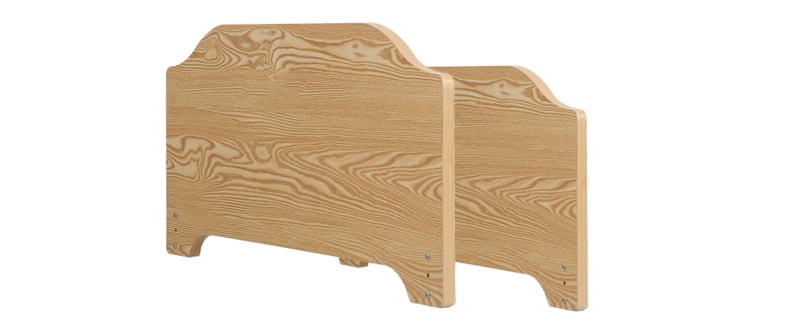
WOOD BED END
Light brown wood, looks warm. Durable, suitable for long-term care.

ROULETTE
Five-inch double-sided casters, anti-winding design, anti-slip, corrosion and heat resistant material, multiple braking will not produce wear.




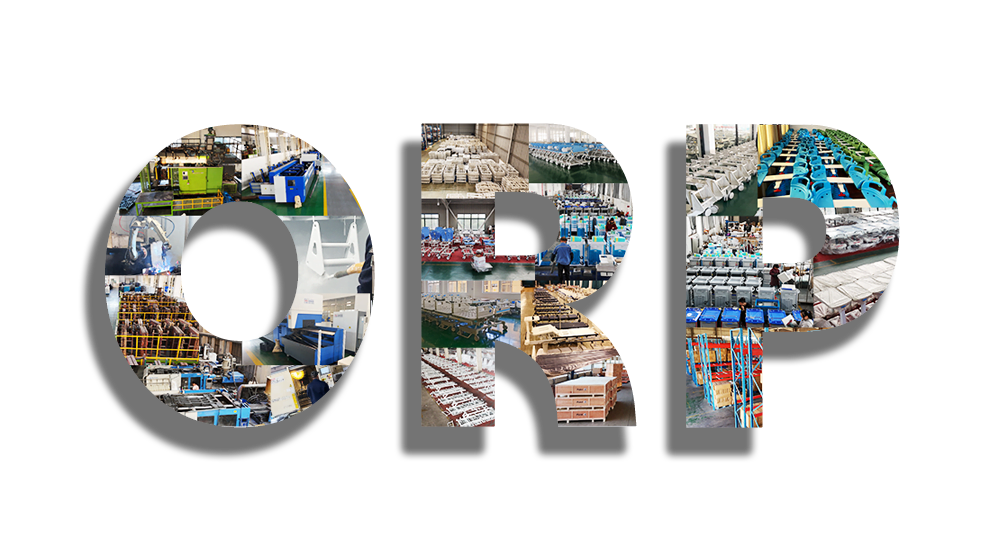
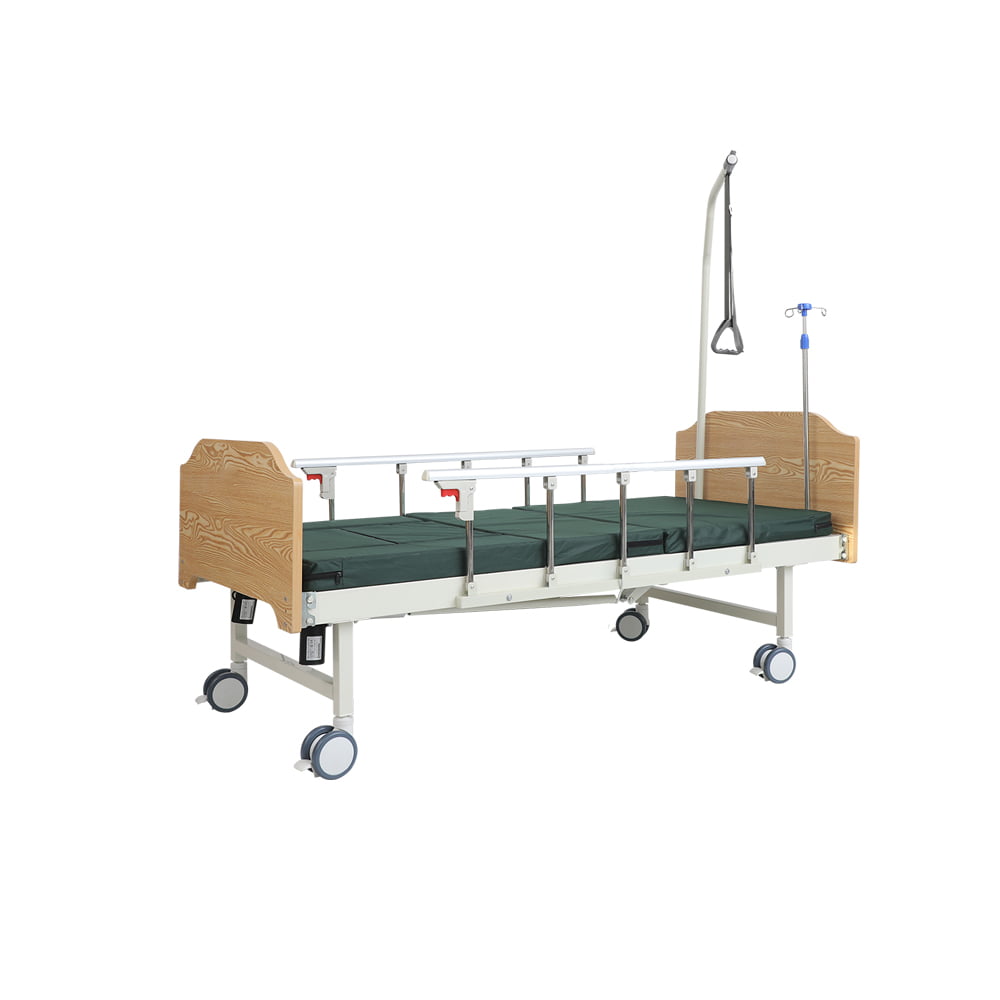
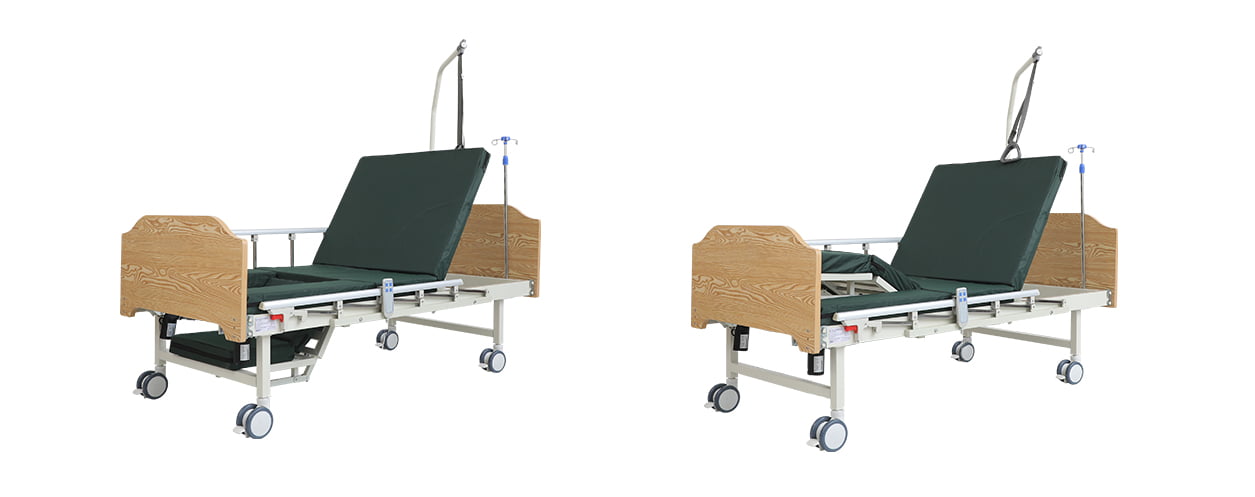

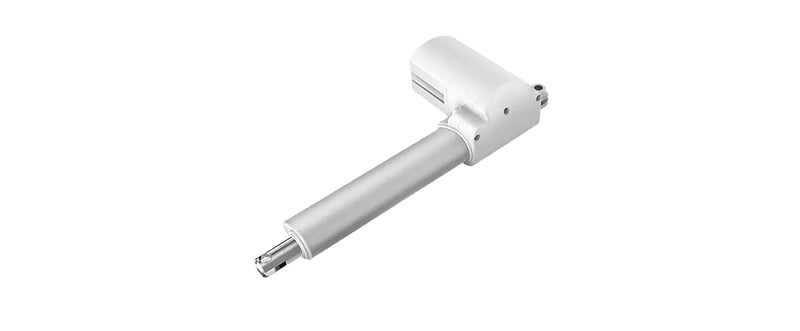
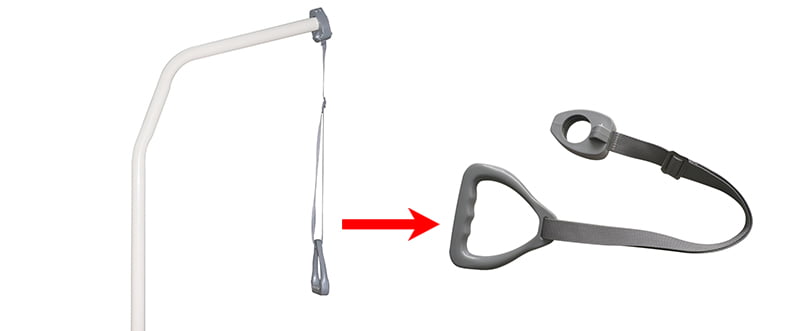
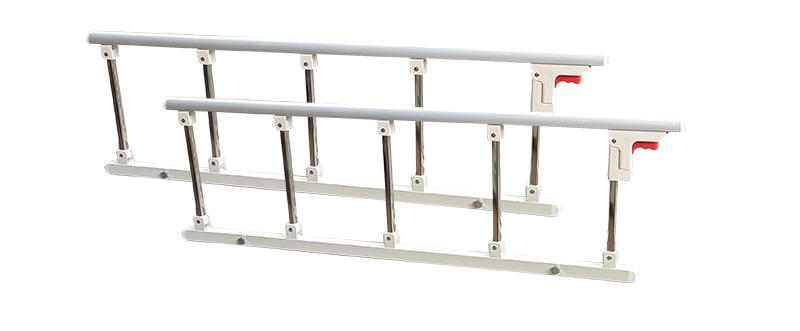
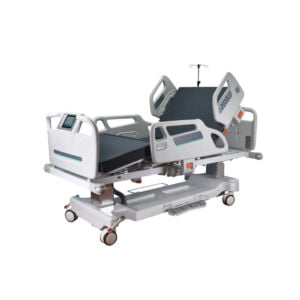
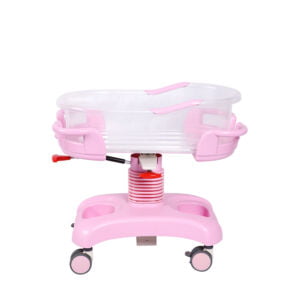
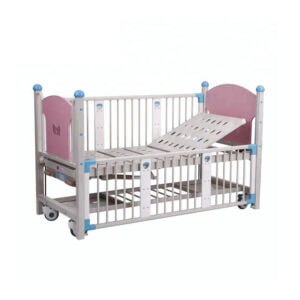
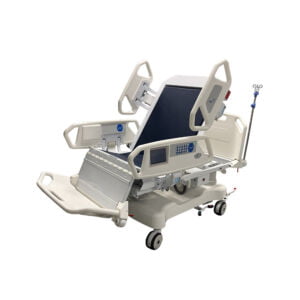

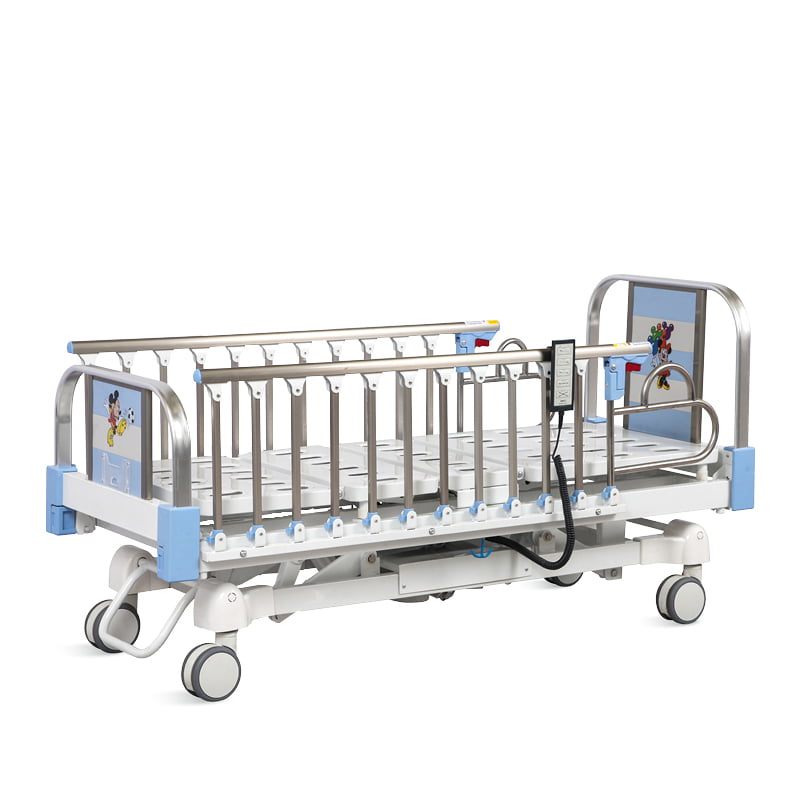
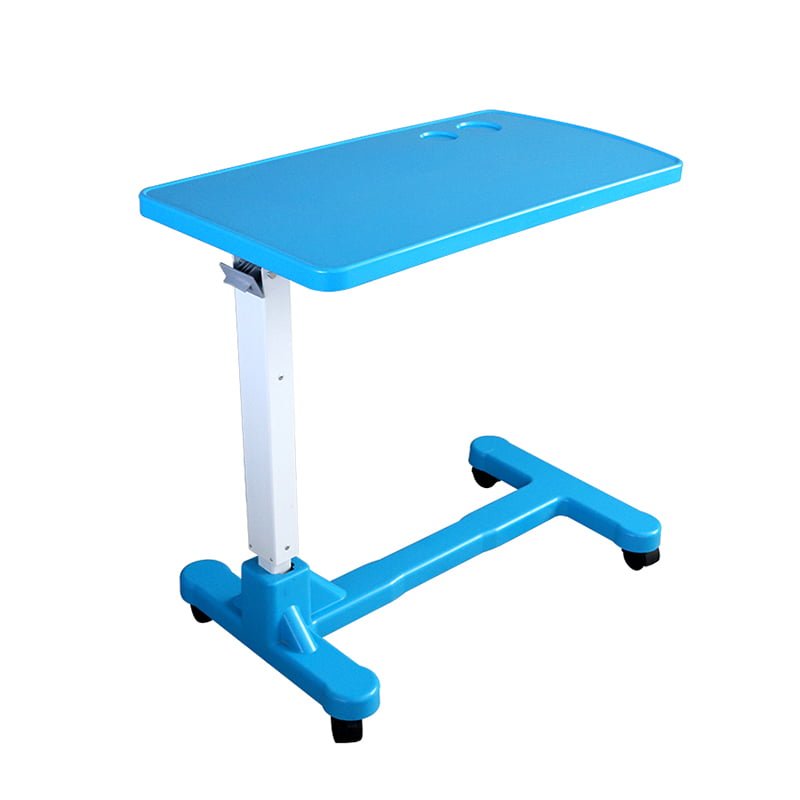
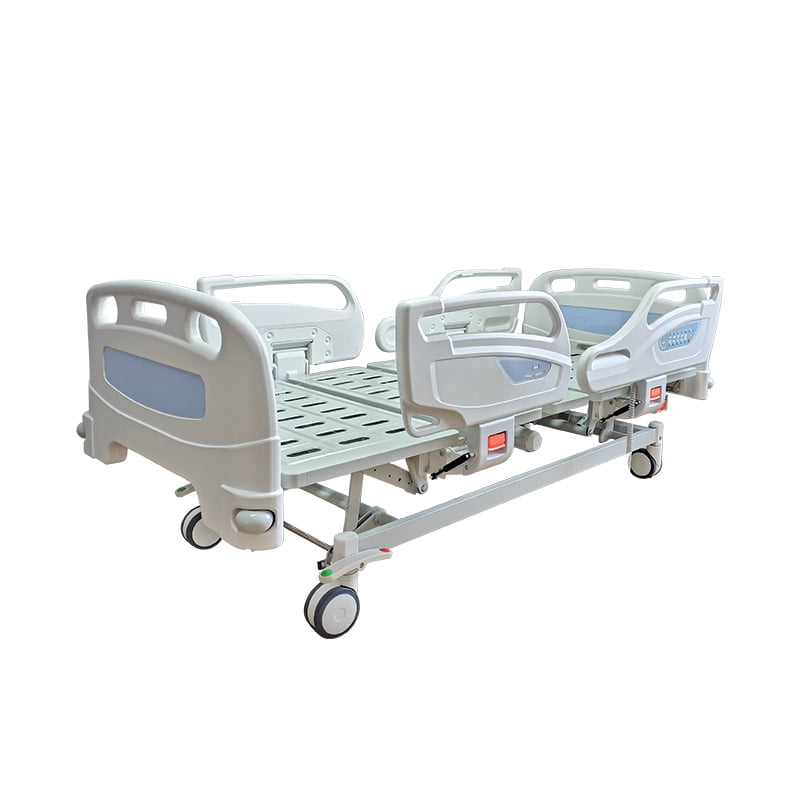
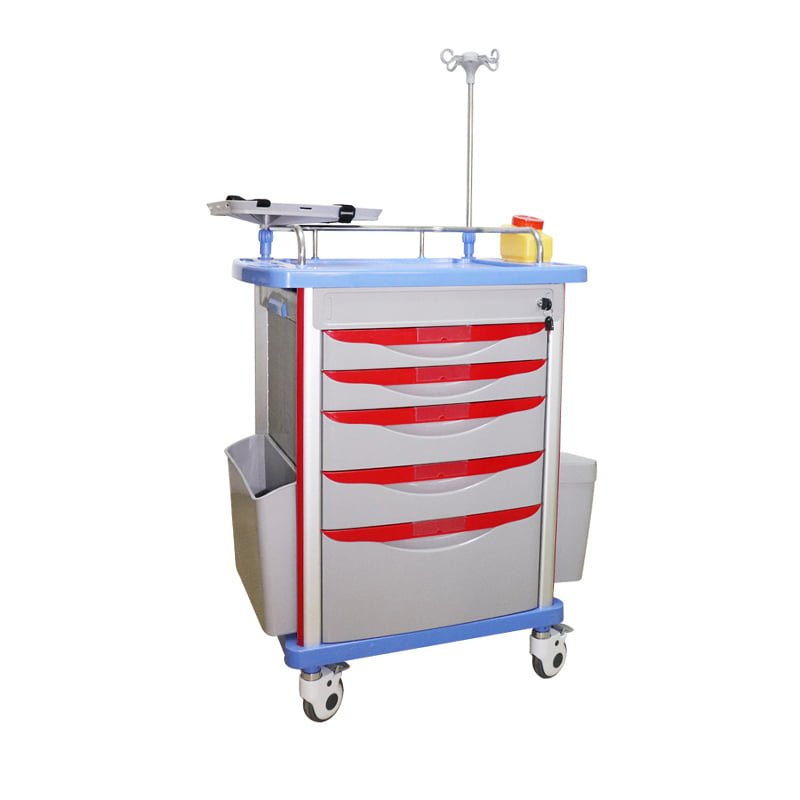
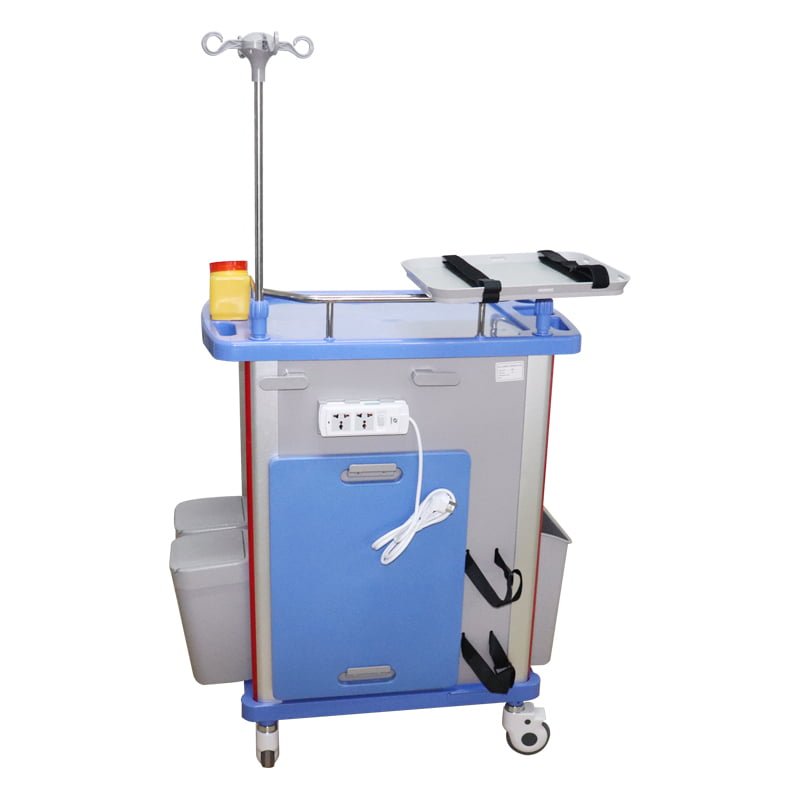
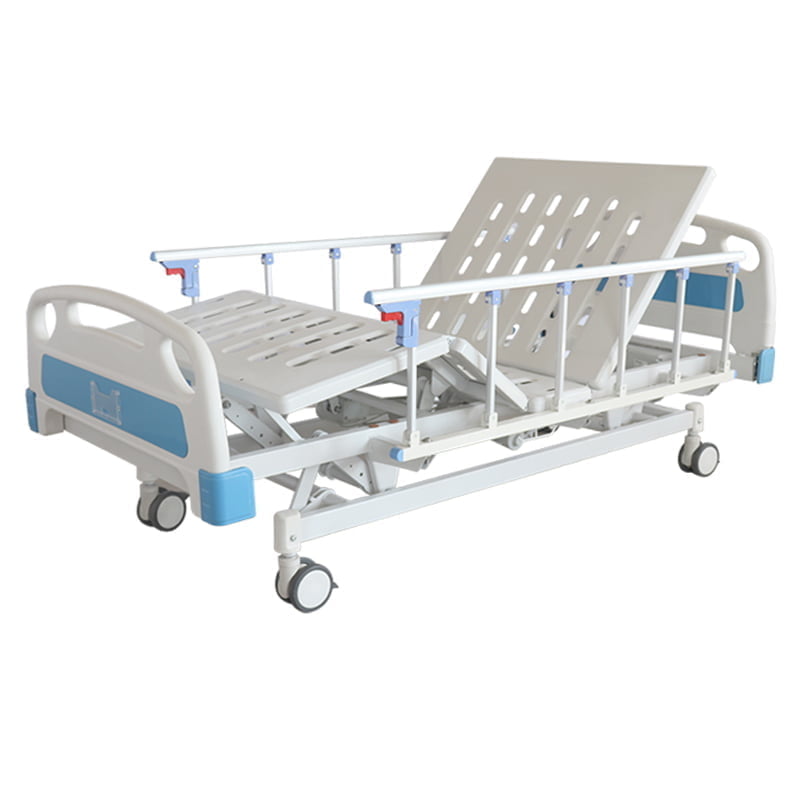
Critiques
Il n’y a pas encore d’avis.